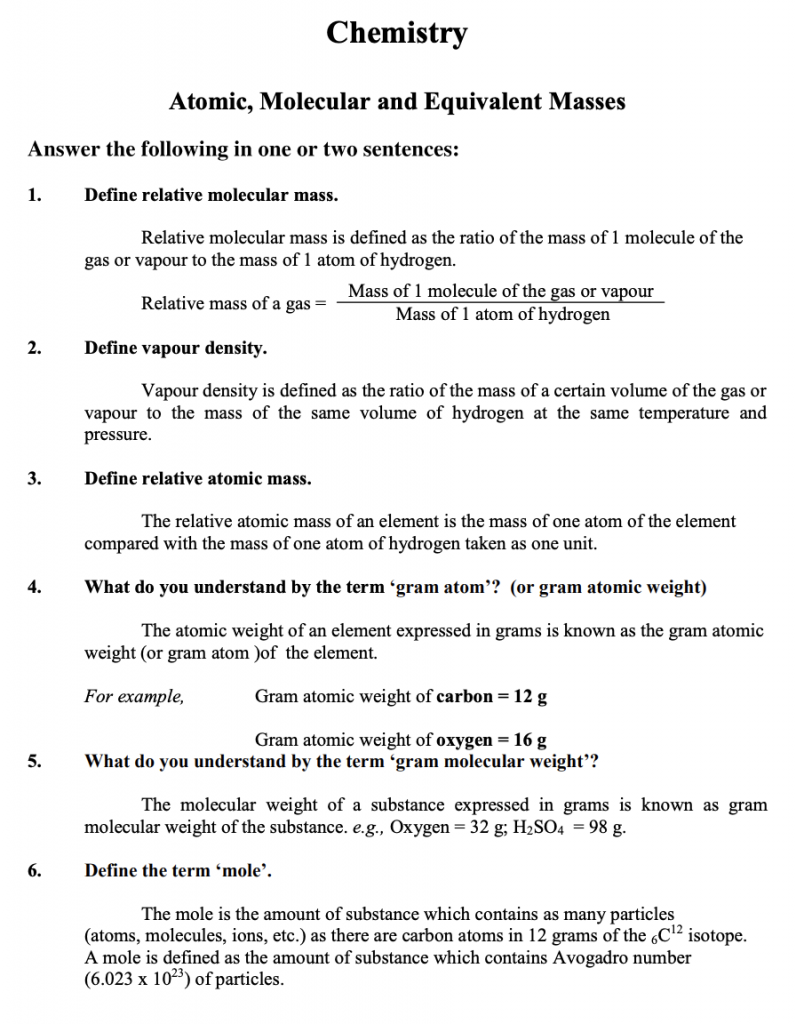Atomic Molecular Questions and Answers
Summary:
This set of questions focuses on concepts related to atomic, molecular, and equivalent masses in chemistry. It covers topics such as relative molecular mass, vapour density, relative atomic mass, gram atomic weight, gram molecular weight, moles, Avogadro’s number, molar volume, equivalent mass, normality of a solution, titration, standard solution, indicators, more.
The questions explain the definitions of these terms and provide relationships between different quantities, such as the mass of an atom and Avogadro’s number, the relationship between the molecular weight and equivalent mass of a substance, and the relationship between the normality and equivalent mass of a solution. They also discuss the importance of equivalent weight in calculations and the principles of volumetric analysis.
These questions offer a comprehensive overview of the fundamental concepts and calculations related to atomic, molecular, and equivalent masses in chemistry.
Excerpt:
Atomic Molecular Questions and Answers
1. Define relative molecular mass.
Relative molecular mass is defined as the ratio of the mass of 1 molecule of the gas or vapour to the mass of 1 atom of hydrogen.
Atomic Molecular Questions and Answers
2. Define vapour density.
Vapour density is defined as the ratio of the mass of a certain volume of the gas or vapour to the mass of the same volume of hydrogen at the same temperature and pressure.
3. Define relative atomic mass.
The relative atomic mass of an element is the mass of one atom of the element compared with the mass of one atom of hydrogen taken as one unit.
4. What do you understand by the term ‘gram atom’? (or gram atomic weight)
The atomic weight of an element expressed in grams is known as the gram atomic weight (or gram atom )of the element.
For example:
Gram atomic weight of carbon = 12 g
Gram atomic weight of oxygen = 16 g
5. What do you understand by the term ‘gram molecular weight’?
The molecular weight of a substance expressed in grams is known as the gram molecular weight of the substance. e.g., Oxygen = 32 g; H2SO4 = 98 g.


Reviews